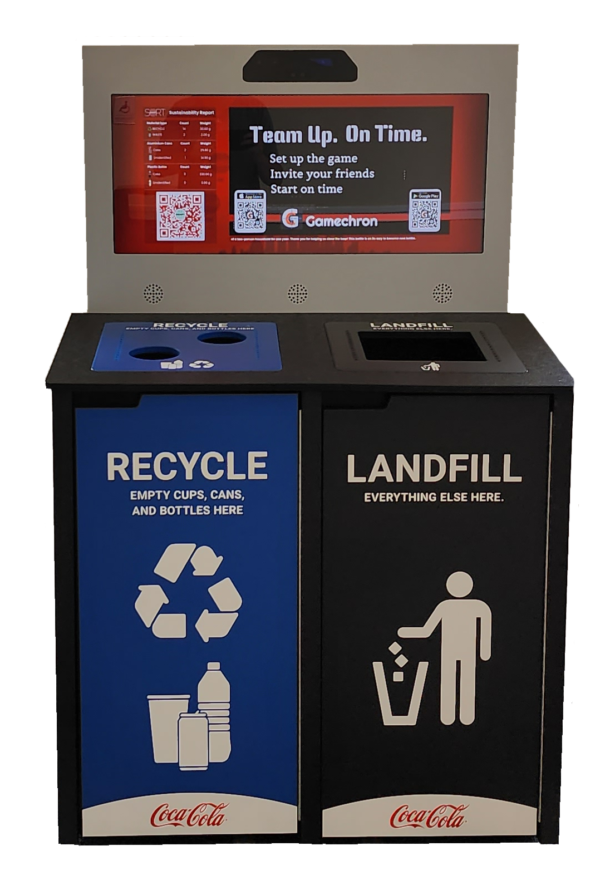In the face of escalating global climate concerns, the pursuit of effective strategies to curb
greenhouse gas emissions has become paramount. Two significant contenders in this endeavor
are recycling and composting. These practices not only contribute to waste reduction but also
play a pivotal role in mitigating emissions. This article will delve into the emission reduction
factors linked to recycling and composting, exploring their environmental benefits, associated
challenges, and the potential for widespread adoption.
Understanding the Carbon Footprint of Waste
Before diving into the emission reduction potential of recycling and composting, it’s essential to
grasp the carbon footprint of waste. The waste management process is intricately connected to
emissions, and various stages of a product’s life cycle contribute to its overall environmental
impact. These emissions can be categorized into upstream and downstream emissions.
Upstream Emissions: These emissions occur during raw material extraction, manufacturing, and
transportation of products. They happen before the product reaches the consumer and
contribute significantly to the overall carbon footprint.
Downstream Emissions: These emissions take place after the product is purchased and used.
They include activities such as waste collection, transportation, and disposal. Downstream
emissions play a crucial role in a product’s overall environmental impact, particularly in the
context of landfilling and incineration.
Recycling’s Emission Reduction Factors
Recycling is a process involving the collection, sorting, and reprocessing of materials to
manufacture new products. This practice offers several emission reduction factors that make it
an essential tool in the fight against climate change.
Reduced Energy Consumption: Recycling often demands less energy compared to producing
goods from raw materials. For example, recycling aluminum consumes about 95% less energy
than producing it from bauxite ore. This reduction in energy consumption directly translates to
lower greenhouse gas emissions, as energy production is a significant contributor to carbon
emissions.
Decreased Raw Material Extraction: By utilizing recycled materials, the demand for raw material
extraction is reduced. This results in fewer upstream emissions associated with mining, refining,
and processing virgin resources.
Mitigation of Landfill Emissions: When materials are recycled instead of being sent to landfills,
the emissions tied to landfilling are mitigated. Landfills are notable sources of methane, a
potent greenhouse gas. Organic materials breaking down anaerobically in landfills produce
methane. By diverting organic waste from landfills, recycling reduces methane emissions.
Circular Economy Promotion: Recycling is a fundamental aspect of the circular economy, where
materials are kept in use for as long as possible. This approach minimizes waste generation,
reduces the need for new production, and consequently lowers emissions.
Composting’s Emission Reduction Factors
Composting is a natural process involving the decomposition of organic materials, like food
scraps, yard waste, and paper, into nutrient-rich soil amendments. Composting offers unique
emission reduction factors that contribute to environmental sustainability.
Methane Emissions Reduction: Sending organic waste to landfills leads to anaerobic
decomposition and methane production. Composting, however, encourages aerobic
decomposition, generating carbon dioxide instead of methane. Carbon dioxide has a
significantly lower global warming potential than methane.
Soil Carbon Sequestration: Adding compost to soil increases its organic carbon content. This
enhances soil health, fertility, and carbon sequestration. Healthy soils act as carbon sinks,
helping offset carbon emissions in the atmosphere.
Reduced Fertilizer Use: Compost-enriched soil requires fewer synthetic fertilizers. Traditional
fertilizer production is energy-intensive and releases emissions. By using compost, which is
nutrient-rich, agricultural dependence on fossil fuel-based fertilizers can be decreased.
Resource Conservation: Composting diverts organic waste from landfills and incinerators,
reducing the pressure on these waste management methods. This, in turn, reduces emissions
from landfilling and incineration processes.
Challenges and Considerations
Despite the evident emission reduction benefits of recycling and composting, they face
challenges that can impact their effectiveness:
Contamination: Both recycling and composting processes are sensitive to contamination.
Contaminants in recycling streams can hinder efficient sorting and processing, potentially
leading to the rejection of entire batches. Similarly, compost contamination can introduce
pollutants into the soil.
Behavioral Factors: Widespread adoption of recycling and composting hinges on public
participation and behavioral change. Lack of awareness, confusion about sorting practices, and
resistance to change can hinder these efforts.
Infrastructure and Investment: Effective recycling and composting demand well-established
infrastructure for collection, sorting, and processing. Lack of investment in such infrastructure
can limit the scalability of these practices.
Market Demand: The success of recycling often depends on the demand for recycled materials.
Fluctuations in market demand can influence the economic viability of recycling programs.
Technological Advancements: Both recycling and composting can benefit from technological
advancements. Improved sorting technologies for recycling and innovative composting
techniques can enhance efficiency.
Conclusion
Recycling and composting are integral components of a sustainable waste management
strategy that contributes significantly to emission reduction efforts. These practices not only
minimize energy consumption and raw material extraction but also mitigate the emissions
associated with landfills and incineration. By promoting a circular economy and enriching soil
health, recycling and composting offer a holistic approach to addressing climate change and
environmental degradation. However, overcoming challenges such as contamination,
behavioral barriers, and infrastructure limitations is essential for maximizing the emission
reduction potential of these practices. As society continues to prioritize environmental
sustainability, investing in and embracing recycling and composting will play a crucial role in
building a greener future.
References
Footnotes
United States Environmental Protection Agency. (2021). Recycling Basics.
https://www.epa.gov/recycle/recycling-basics
Worrell, E., & Reuter, M. A. (2014). Handbook of Recycling: State-of-the-art for Practitioners,
Analysts, and Scientists. Elsevier.
United Nations Environment Programme. (2016). Global Waste Management Outlook.
https://www.unenvironment.org/resources/report/global-waste-management-outlook
Ellen MacArthur Foundation. (2021). What is a Circular Economy?
https://www.ellenmacarthurfoundation.org/circular-economy/concept
United States Environmental Protection Agency. (2021). Organic Materials Management.
https://www.epa.gov/sustainable-management-food/organic-materials-management
Lehmann, J., & Rillig, M. C. (2015). Microbial carbon use efficiency: a microcosm approach to
ecosystem carbon dynamics. Soil Biology and Biochemistry, 80, A3-A4.
National Institute for Water and Atmospheric Research Ltd (NIWA). (2013). Compost Use in
New Zealand.




